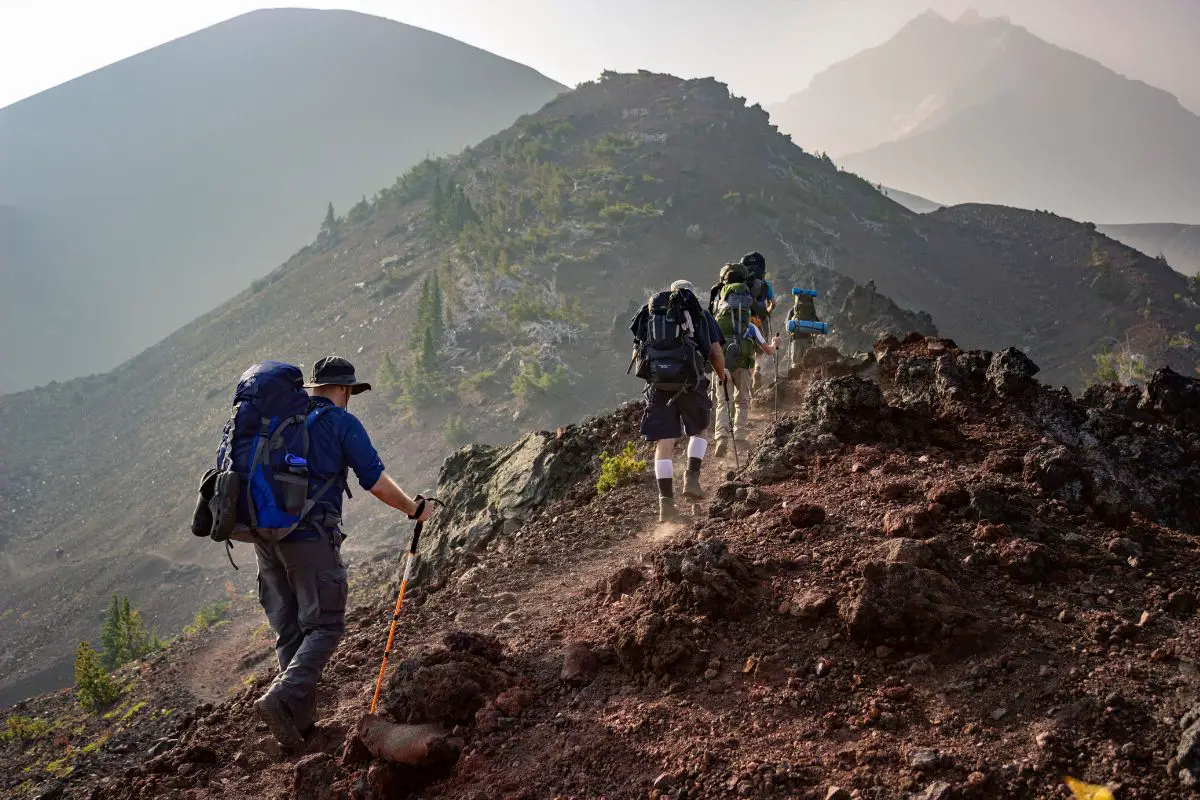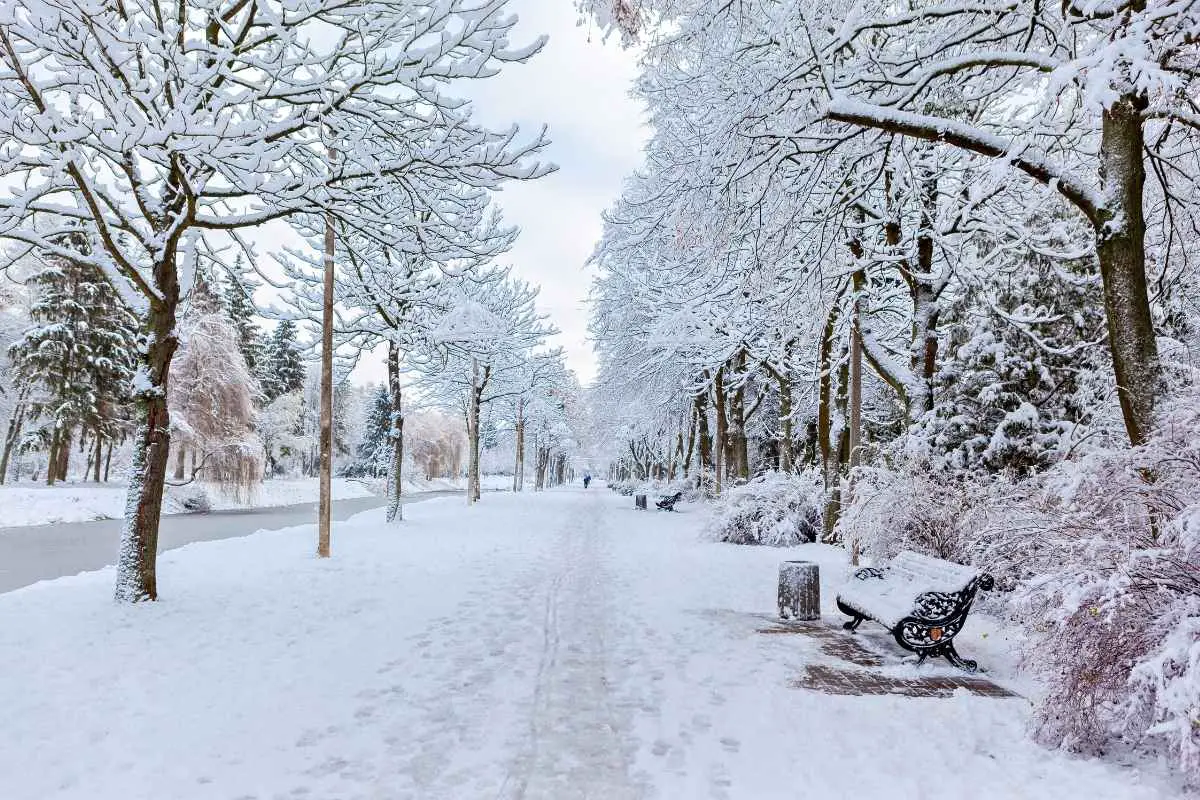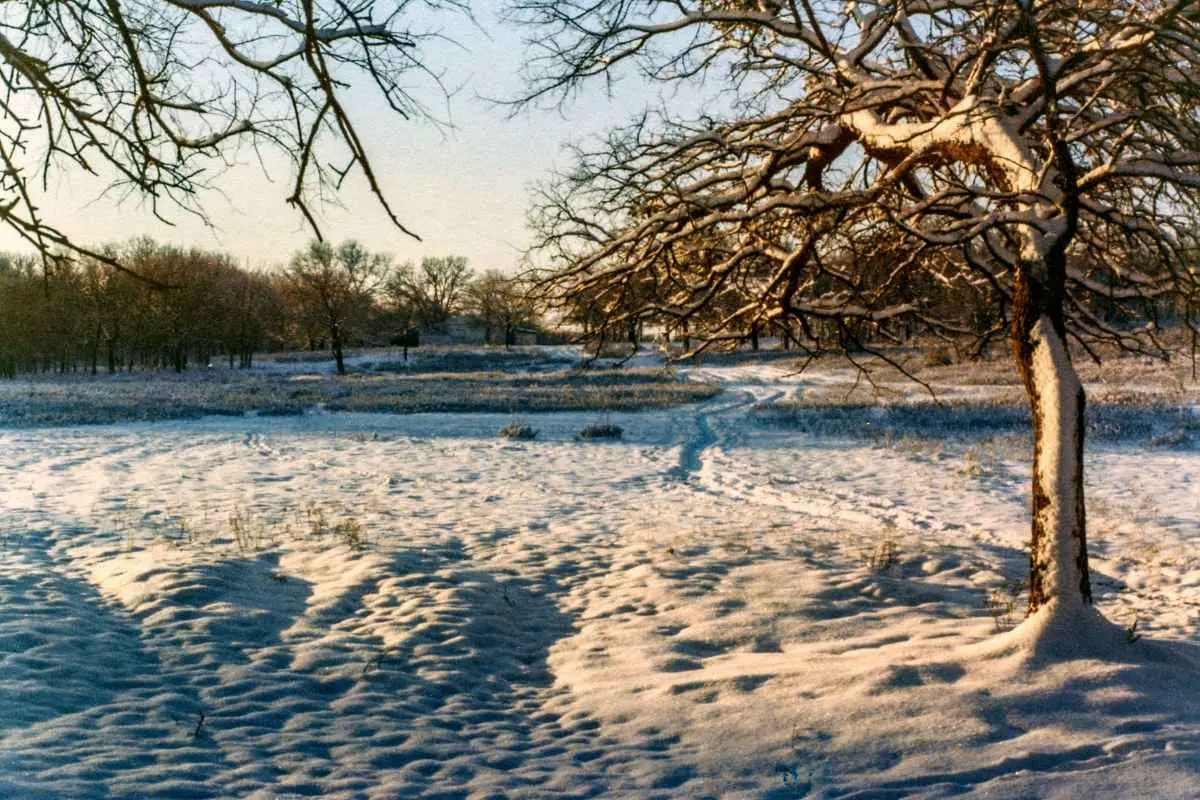There’s an undeniable allure to trekking through mountainous terrain—the invigorating fresh air, the stunning panoramic views, and the rewarding feeling of reaching a peak.
If you’re seeking your Best mountains to hike in US and varied mountain ranges globally, each presenting unique trails and memorable adventures.
Lace up your hiking boots, gather your essentials, and get ready to find some of America’s most breathtaking landscapes!
Best mountains to hike in US:
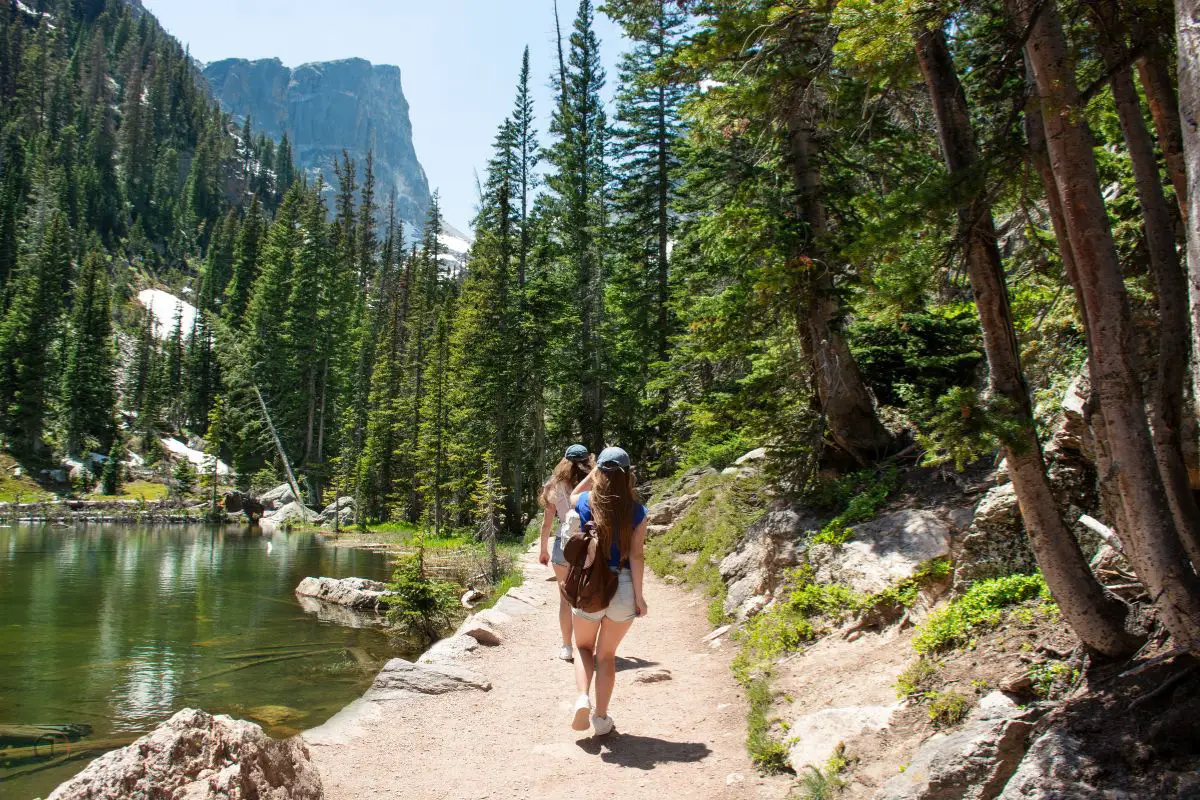
These Best mountains to hike in US prepare your gear, tighten your boots, and let’s explore these majestic peaks!
1. Half Dome, Yosemite National Park, California
Why Choose Half Dome?
Half Dome is one of Yosemite National Park’s most recognizable landmarks, attracting hikers from all over the world. Its distinctive granite structure, resembling a dome split in half, provides both a demanding climb and extraordinary vistas from the summit.
Prime Trails:
- Half Dome Trail: This intense 14- to 16-mile round-trip hike is renowned for its final stretch, which includes climbing steel cables. The way takes you through different conditions, including lively glades, transcending precipices, and serene timberlands.
- Mist Trail to Vernal and Nevada Falls: A slightly less strenuous alternative that still offers breathtaking waterfall views and scenic beauty.
Scenic Highlights:
- Impressive granite walls and sweeping views of Yosemite Valley.
- Majestic waterfalls, including Yosemite Falls and Nevada Falls.
- Different plant and creature life along the path.
Optimal Visiting Time:
Late spring to early autumn (May to October) when the weather is favorable, and the waterfalls are flowing at their fullest.
Hiking Recommendations:
- Permits: Necessary for the Half Dome cable section. Apply early through the Yosemite National Park website.
- Preparation: Be ready for a long, demanding hike with significant elevation gain. Bring a lot of water, tidbits, and sun insurance.
- Safety: Begin your hike early to avoid afternoon storms and ensure you have the appropriate gear for the cable climb.
2. Mount Rainier, Washington
Why Mount Rainier?
Mount Rainier, an active stratovolcano, stands as the tallest peak in Washington State and a focal point of Mount Rainier National Park. Its snow-covered summit and expansive glaciers create a picturesque backdrop for a variety of hiking adventures.
Prime Trails:
- Skyline Trail: A 5.5-mile loop offering breathtaking views of glaciers, vibrant wildflower meadows, and sweeping vistas of Mount Rainier.
- Wonderland Trail: A demanding 93-mile loop that encircles the entire mountain, showcasing diverse ecosystems and stunning scenery.
Scenic Highlights:
- Glacial landscapes and towering ice formations.
- Colorful wildflower displays during the summer.
- Diverse wildlife, including marmots, mountain goats, and black bears.
Optimal Visiting Time:
July to September for the best trail conditions and stable weather.
Hiking Recommendations:
- Permits: Required for overnight hikes on the Wonderland Trail. Plan and secure permits well in advance.
- Weather Preparedness: Mountain weather can be unpredictable. Pack layered clothing and be ready for sudden changes.
- Acclimatization: Take time to adjust to higher elevations to prevent altitude sickness.
3. Grand Teton, Wyoming
Why Grand Teton?
The Grand Teton mountain range, part of the Rocky Mountains, offers some of the most dramatic and scenic hiking trails in the United States. With barbed tops, unblemished lakes, and plentiful untamed life, Excellent Teton Public Park is a shelter for explorers.
Prime Trails:
- Cascade Canyon Trail: A picturesque 9.5-mile round-trip hike that takes you through lush forests and alongside sparkling streams, ending with stunning views of the Teton Range.
- Paintbrush Canyon Trail: A more challenging 19.7-mile hike known for its rugged terrain and breathtaking vistas.
Scenic Highlights:
- Majestic Teton peaks mirrored in tranquil alpine lakes.
- Varied ecosystems, from dense forests to alpine meadows.
- Opportunities to observe wildlife such as elk, moose, and eagles.
Optimal Visiting Time:
June to September when trails are clear of snow and the weather is most favorable.
Hiking Recommendations:
- Start Early: Trails can become crowded, especially during peak seasons. Starting early helps you enjoy the tranquility of the mountains.
- Bear Safety: Carry bear spray and make noise to avoid surprising wildlife. Learn proper food storage techniques.
- Trail Conditions: Check current trail conditions and weather forecasts before setting out.
4. Denali (Mount McKinley), Alaska
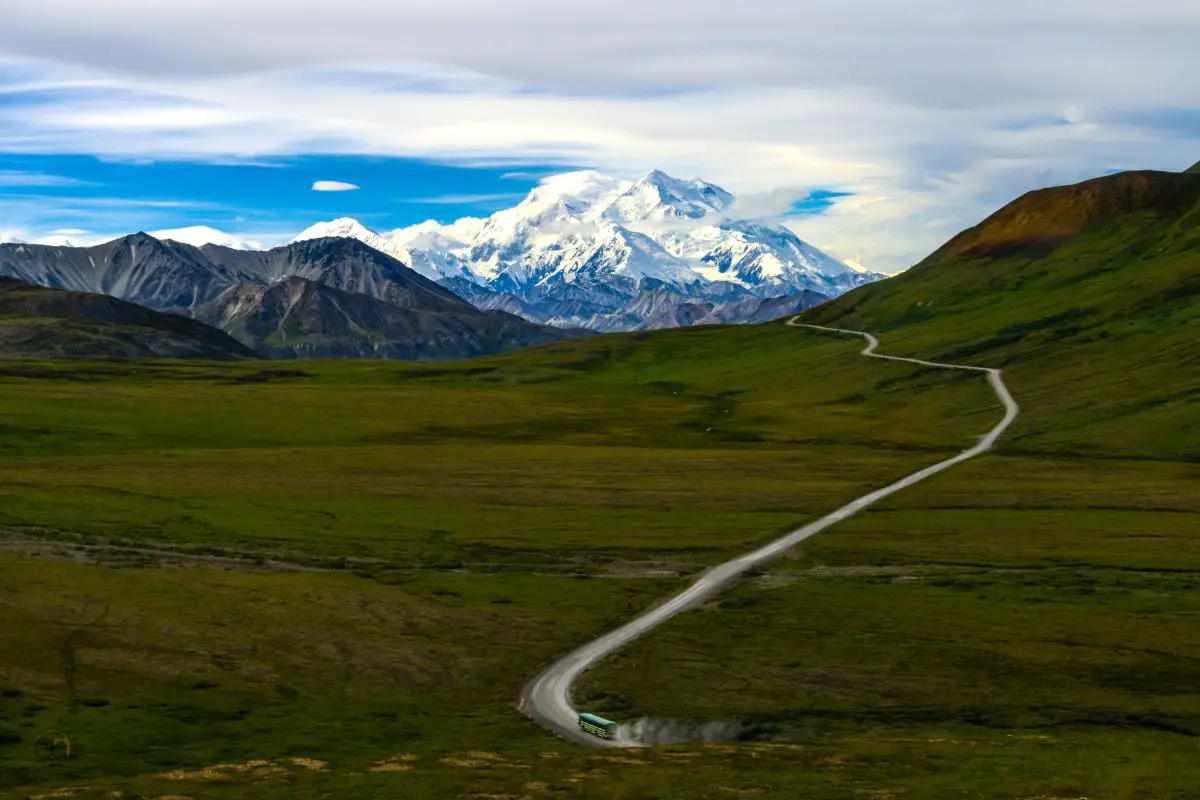
Why Denali?
Denali, the highest peak in North America, is a legendary destination for serious mountaineers and adventurous hikers. Located in Denali National Park, its remote location and extreme conditions offer a true wilderness experience.
Prime Trails:
- Hubbard Glacier Trail: A challenging hike that provides stunning views of the massive Hubbard Glacier and the surrounding rugged landscape.
- Eielson Visitor Center Trail: A shorter, more accessible trail offering panoramic views of Denali and opportunities to spot wildlife.
Scenic Highlights:
- Towering, snow-capped peaks and expansive glaciers.
- Vast, untouched wilderness with minimal human impact.
- Special untamed life, including Dall sheep, wild bears, and caribou.
Optimal Visiting Time:
Late May to early July for the best weather and trail conditions.
Hiking Recommendations:
- Permits and Regulations: Apply through the Denali National Park Service.
- Extreme Weather: Prepare for cold temperatures, strong winds, and sudden weather changes. Bring appropriate gear and clothing.
- Guided Tours: Consider joining a guided tour for added safety and expertise, especially for more remote or challenging hikes.
Read Next: What To Do in Idaho
5. Mount Mitchell, North Carolina
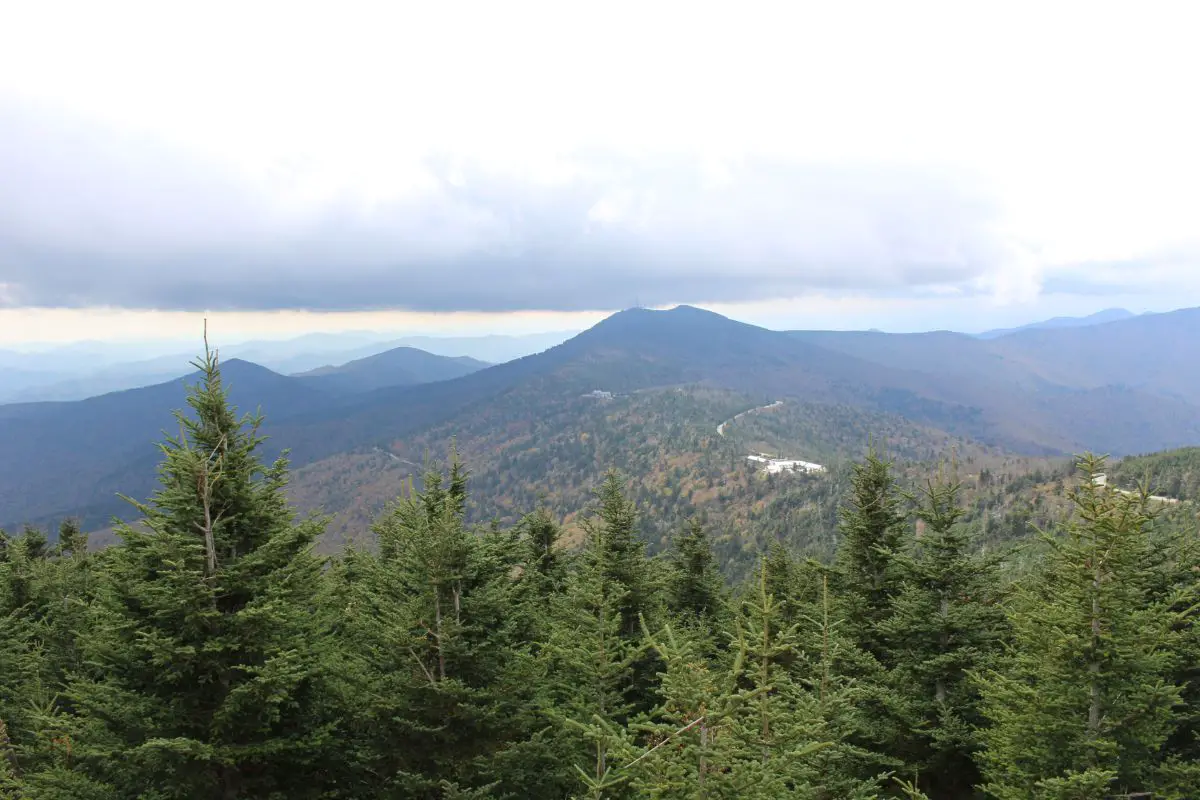
Why Mount Mitchell?
Mount Mitchell holds the title of the highest peak east of the Mississippi River, offering stunning views and a unique hiking experience in the Appalachian Mountains. Located in Mount Mitchell State Park, it’s a popular destination for hikers of all levels.
Prime Trails:
- Mount Mitchell Trail: A 2-mile round-trip hike that leads directly to the summit, providing easy access to panoramic views.
- Lake Trail: A gentler 1-mile hike around Mount Mitchell Lake, perfect for families and those seeking a shorter trek.
Scenic Highlights:
- Panoramic views from the highest peak in the eastern U.S.
- Rich biodiversity with diverse plant and animal life.
- Cooler temperatures and misty landscapes typical of high elevations.
Optimal Visiting Time:
Late spring to early fall (May to October) when the weather is most favorable and the wildflowers are in bloom.
Hiking Recommendations:
- Altitude: While not as extreme as other high peaks, be mindful of the altitude and take breaks as needed.
- Footwear: Wear sturdy hiking shoes to navigate the well-maintained trails.
- Visitor Center: Stop by the Mount Mitchell State Park Visitor Center for maps, information, and any trail updates.
Each of these five mountains presents unique challenges and awe-inspiring beauty, making them must-visit destinations for any hiking enthusiast.
Before You Go:
- Have you hiked any of these incredible mountains?
- Share your experiences in the comments below or let us know which mountain tops are on your hiking bucket list!
- Don’t forget to subscribe for more outdoor adventure guides and tips, Join us on Pinterest.
FAQs | Best mountains to hike in US
Q. What Are the Difficulty Levels of These Premier Hiking Mountains?
- Beginner: Mount Mitchell, North Carolina and Bear Lake Trail, Rocky Mountain National Park, Colorado offer easier trails with rewarding scenery.
- Intermediate: Cascade Canyon Trail, Grand Teton National Park and Skyline Trail, Mount Rainier provide moderate challenges with stunning landscapes.
- Advanced: Half Dome, Yosemite National Park and Hubbard Glacier Trail, Denali National Park are suited for experienced hikers seeking rigorous climbs and dramatic views.
Q. What Is the Ideal Time to Hike the Top U.S. Mountains?
Timing your hike can greatly enhance your experience:
- Half Dome, Yosemite: Best hiked from late spring to early autumn (May to October) for favorable weather and peak waterfall flows.
- Mount Rainier: July through September offers optimal trail conditions and stable weather.
- Grand Teton: June to September when trails are snow-free and weather is most reliable.
- Denali: Late May to early July provides the best weather and trail accessibility.
- Mount Mitchell: Late spring to early autumn (May to October) ensures mild temperatures and blooming wildflowers.
Q. What Gear Should I Bring for Hiking the Top U.S. Mountains?
- Backpack: A comfortable, properly fitted pack with adequate space for your gear.
- Clothing: Layered attire suitable for changing weather conditions, including moisture-wicking base layers and a waterproof outer layer.
- Footwear: Durable, well-broken-in hiking boots or shoes.
- Navigation Tools: Maps, a compass, and/or a GPS device to stay on course.
- Safety Equipment: First aid kit, whistle, multi-tool, and a reliable headlamp.
- Food and Water: Lightweight, high-energy snacks and a dependable water purification system.
- Shelter: A tent, tarp, or hammock, along with a sleeping bag appropriate for the season.
Q. Are Permits Required for Hiking These Top U.S. Mountains?
Many popular mountains and trails necessitate permits to manage hiker numbers and protect the environment:
- Half Dome, Yosemite National Park: Requires a special permit for the cable-assisted section. Applications must be submitted well in advance via the Yosemite National Park website.
- Wonderland Trail, Mount Rainier: Permits are needed for overnight hiking. Details can be found on the Mount Rainier National Park website.
- Denali National Park: Backcountry hiking and mountaineering require permits. Visit the Denali National Park Service for application information.
- Grand Teton National Park: Certain trails and backcountry areas require permits. Refer to the Grand Teton National Park website for more details.
Always verify the specific park or trail’s official website for the latest permit requirements and application procedures prior to your hike.
Q. What Safety Precautions Should I Take When Hiking the Best U.S. Mountains?
Ensuring your safety is paramount when hiking mountainous terrains:
- Plan Ahead: Research your chosen trail, understand the terrain, and check weather forecasts before setting out.
- Notify Someone: Inform a friend or family member about your hiking plans and expected return time.
- Stay on Designated Paths: Helps prevent getting lost and reduces your impact on the natural environment.
- Carry Navigation Aids: Maps, a compass, and a GPS device are essential for maintaining your orientation.
- Pack Essential Supplies: Include a first aid kit, extra food, sufficient water, and emergency shelter.
- Be Wildlife Aware: Familiarize yourself with local wildlife and know how to handle potential encounters.
- Know Your Limits: Select trails that match your fitness and experience level to avoid overexertion and injuries.
- Start Early: Begin your hike early in the day to ensure ample time to complete it before dark.
- Stay Hydrated and Energized: Drink plenty of water and consume energy-rich snacks to maintain your stamina.

